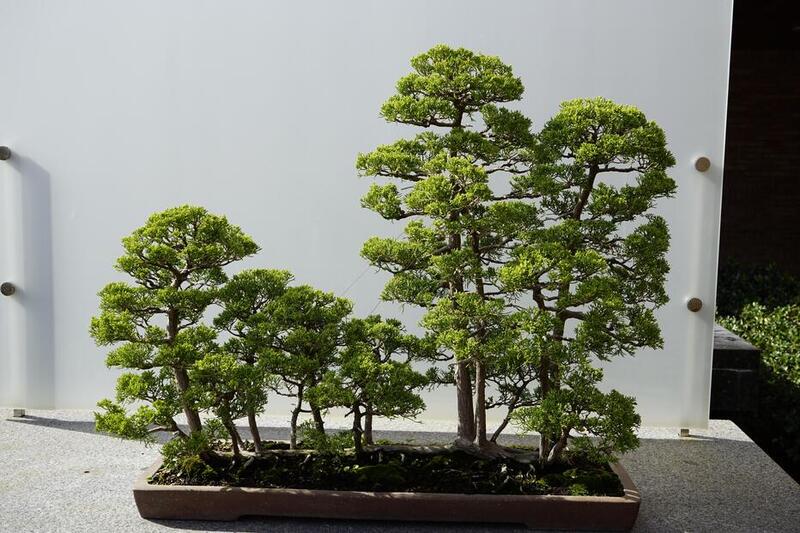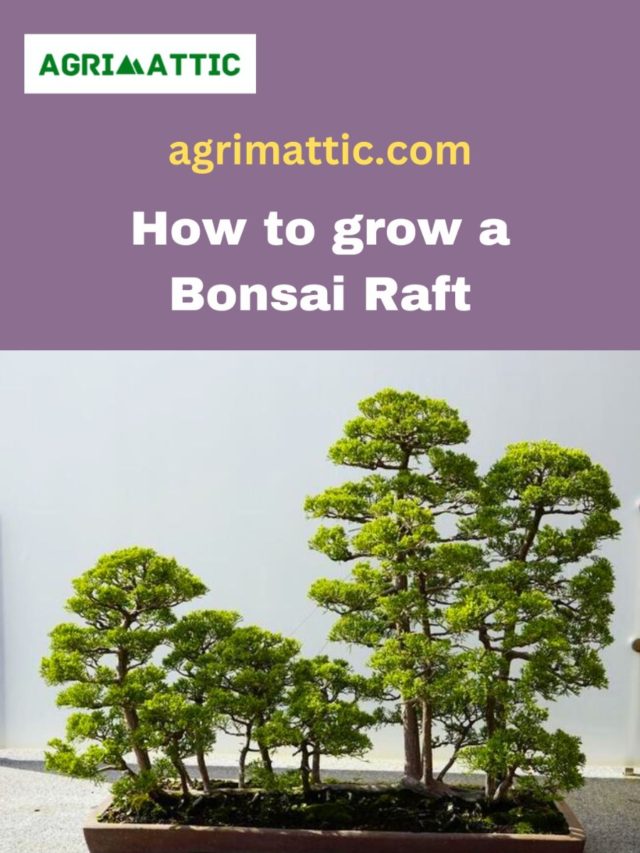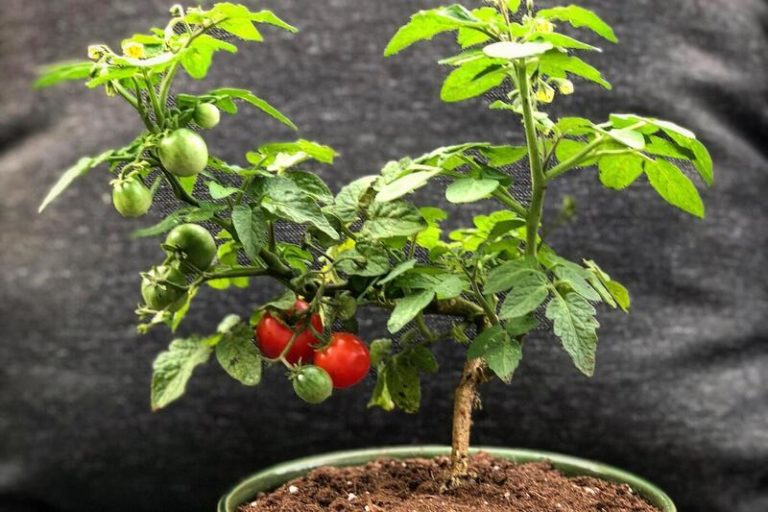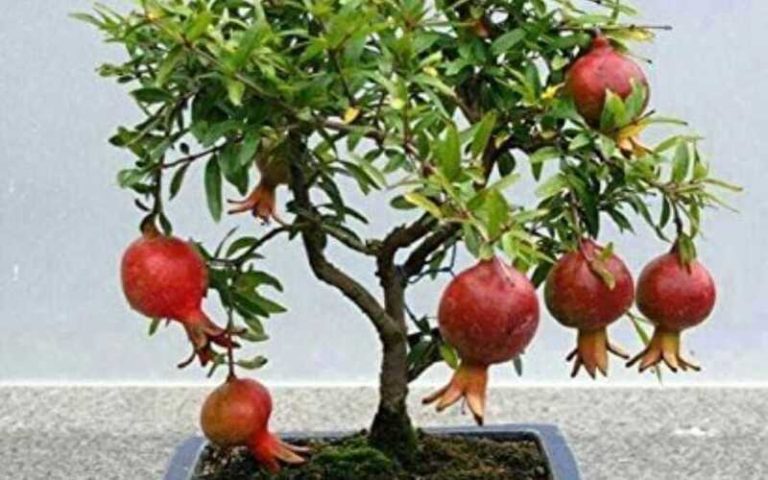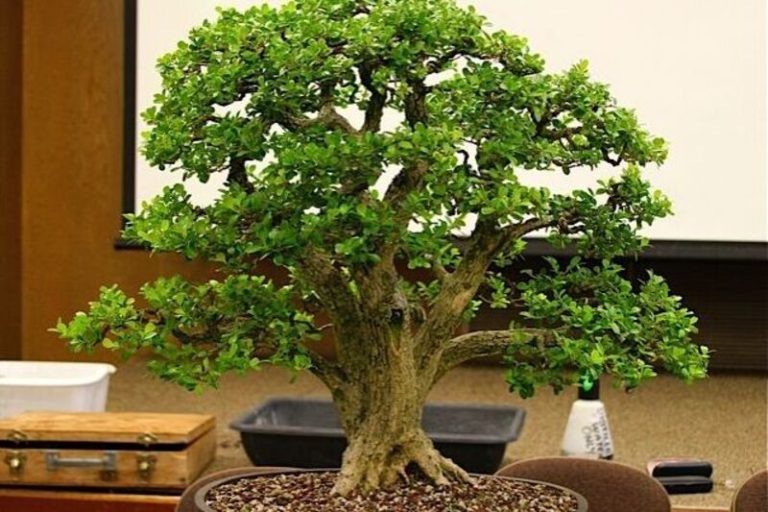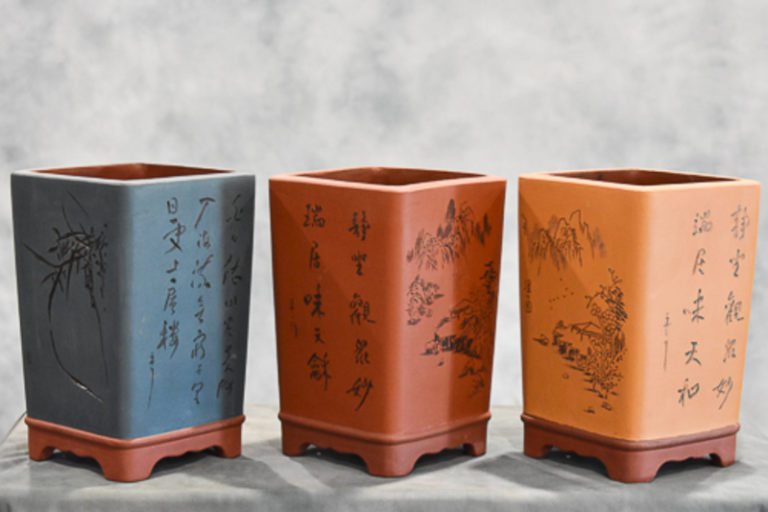Bonsai Raft: Creating Harmony with Multiple Trees
Bonsai Raft is a captivating technique that allows us to transform a group of trees into a single, interconnected landscape. It is a unique and artistic approach to bonsai that brings the beauty of nature into miniature form. In this article, we will delve into the world of Bonsai Raft, understanding their origins, techniques, styling, care, and symbolism.
What is Bonsai Raft?
Bonsai Raft is a bonsai technique where multiple tree seedlings or branches are planted together on a raft-like structure. It creates the illusion of a miniature forest with interconnected trunks, branches, and roots. The trees are carefully selected and shaped to achieve a natural look. Bonsai Raft requires special care and maintenance to ensure the health of the trees. It is a unique and visually striking way to display bonsai, capturing the beauty of a miniature landscape.
History and Origins of the Bonsai Raft
The background of Bonsai Raft goes back to old Japan, where bonsai was first created. As the art of bonsai grew, people who liked it started trying out new ways to make interesting and unique arrangements.
The concept of Bonsai Raft is believed to have originated centuries ago when Japanese bonsai artists observed trees growing naturally along riverbanks and rocky slopes. Inspired by this natural phenomenon, they sought to recreate the beauty of interconnected trees in their bonsai creations.
Over time, the technique of Bonsai Raft gained popularity and recognition among bonsai artists and enthusiasts. It became a distinctive and cherished style in the world of bonsai cultivation.
The art of Bonsai Raft has since spread beyond Japan, finding enthusiasts and practitioners worldwide. Today, bonsai artists from various cultures and backgrounds continue to embrace and refine the technique, incorporating their own artistic expressions and interpretations.
The rich history and cultural significance of Bonsai Raft contribute to its enduring appeal as a unique and captivating aspect of the bonsai art form. It serves as a testament to the creativity, craftsmanship, and deep appreciation for nature’s beauty that bonsai embodies.
Characteristics of the Bonsai Raft
Bonsai Raft exhibits several distinctive characteristics that set it apart from other bonsai styles. Here are some key characteristics of the Bonsai Raft:
1. Interconnectedness: One thing that makes Bonsai Raft stand out is how the trees feel like they are all linked. The stems, branches, and roots are put together on purpose to make a single piece that looks like how trees grow in a forest or along a stream.
2. Naturalistic Appearance: Bonsai Raft aims to replicate the organic and untamed look of trees growing in the wild. The trees are positioned in a way that mimics their natural inclination to reach for sunlight and adapt to environmental conditions.
3. Multiple Trunks: Unlike traditional bonsai styles that focus on a single trunk, Bonsai Raft typically incorporates multiple trunks. These trunks emerge from a common base or spread across the rafting surface, creating a dynamic and visually appealing composition.
4. Branching and Foliage Distribution: The branches of the trees in a Bonsai Raft are strategically positioned to ensure balanced foliage distribution. This helps create a harmonious and aesthetically pleasing arrangement, with branches extending in different directions to give the illusion of a natural forest canopy.
5. Rafting Surface: The rafting surface, whether it’s a shallow container or a slab of wood, plays a crucial role in the Bonsai Raft. It provides a platform for the trees to grow and allows for the artistic arrangement of trunks and roots.
6. Longevity and Evolution: Bonsai Raft has the potential for long-term development and transformation. As the trees grow and mature, their trunks thicken, branches extend, and roots deepen. This ongoing evolution adds to the charm and character of the Bonsai Raft over time.
7. Artistic Expression: Bonsai Raft allows for artistic expression and creativity. Bonsai artists can experiment with various tree species, branch placements, and styling techniques to create unique compositions that evoke a sense of natural beauty and harmony.
The combination of these characteristics makes Bonsai Raft a captivating and visually striking bonsai style, capturing the essence of nature’s interconnectedness and the beauty of a miniature forest landscape.
Understanding Bonsai Raft Techniques
Understanding the techniques involved in creating a Bonsai Raft is essential for achieving a successful and visually appealing composition. Here are the key steps and techniques involved in Bonsai Raft:
Selecting Suitable Tree Species: Choose tree species that are well-suited for Bonsai Raft. Look for species that have flexible branches, small leaves, and can tolerate being planted in close proximity to each other. Popular choices include junipers, pines, maples, and elms.
Preparing the Trunks and Roots: Trim and shape the trunks and roots of the trees to create the desired composition. Remove any unwanted branches or excess foliage. Gently bend and position the trunks to achieve a natural and harmonious arrangement. Trim and spread out the roots to fit the rafting surface.
Creating the Raft Design: Prepare the rafting surface, which can be a shallow container or a slab of wood. Position the trees on the surface, considering the desired composition and spacing between the trunks. Arrange them in a way that mimics a natural forest landscape or riverbank setting.
Wiring and Positioning the Branches: Use bonsai wire to shape and position the branches. This helps create the desired aesthetic and allows for the proper distribution of foliage. Be careful not to wrap the wire too tightly to avoid damaging the branches. Gently bend and position the branches to achieve a balanced and natural look.
Securing the Tree to the Rafting Surface: Use bonsai-friendly wire or bonsai clips to secure the trunks and roots to the rafting surface. This ensures stability and prevents the trees from shifting or moving. Avoid tying the wire too tightly to allow for growth and expansion.
Pruning and Training Techniques: Regular pruning is crucial to maintain the desired shape and size of the trees in the Bonsai Raft. Trim back excessive growth, remove any dead or damaged branches, and promote branching where needed. Continuously monitor the development of the trees and adjust pruning techniques accordingly.
Fertilization and Nutrient Balance: Provide appropriate fertilization to support the growth and health of the Bonsai Raft. Use a balanced bonsai fertilizer to provide essential nutrients. Ensure proper watering and soil drainage to maintain a healthy root system.
Regular Maintenance: Regularly monitor the health of the trees in the Bonsai Raft. Check for pests, diseases, or any signs of stress. Adjust wire or branch positions as needed to maintain the desired aesthetic. Prune and trim the foliage to promote airflow and prevent overcrowding.
By understanding and applying these techniques, you can create a visually stunning Bonsai Raft that captures the beauty and essence of a miniature forest landscape. Remember to exercise patience and allow the trees to grow and develop over time, embracing the evolving artistry of your Bonsai Raft.
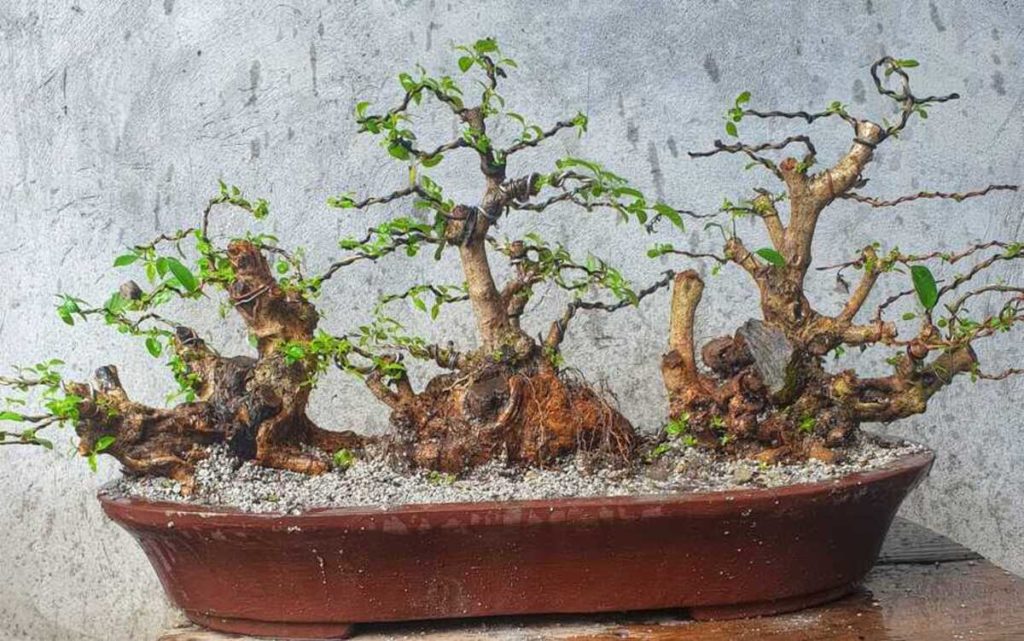
How to grow a Bonsai Raft
To cultivate a Bonsai Raft, it is necessary to plan ahead, be patient, and pay close attention to the details. Here is a detailed inventory of the steps required to cultivate a Bonsai Raft:
- Select Suitable Tree Species: Choose tree species that are suitable for Bonsai Raft composition. Ideally, select species with flexible trunks and branches that can be trained and styled easily. Common choices include deciduous trees like maples, elms, or beeches, as their branches are more flexible and can be shaped into a raft-like formation.
- Acquire Multiple Saplings or Young Trees: Obtain several saplings or young trees of the chosen species. The number of trees required will depend on the desired size and density of the raft. Aim for an odd number of trees, usually three to five, to create a more visually appealing composition.
- Planting and Root Development: Prepare a shallow, wide container or a planting area with a well-draining bonsai soil mix. Plant the saplings or young trees close together in a horizontal arrangement, mimicking the appearance of trees growing along a riverbank or on a rock formation. Ensure that the roots are properly spread out and connected to promote fusion and stability.
- Training and Styling: As the trees grow, use training techniques such as wiring and pruning to guide the growth and shape the raft. Initially, use wire to gently bend the trunks and branches into the desired formation. Be careful not to apply excessive pressure that could damage or break the branches. Regularly monitor the growth and adjust the wiring as needed to maintain the desired shape.
- Fusion of Trunks and Branches: Encourage the fusion of trunks and branches by ensuring close contact between them. As the trees grow, the trunks and branches will naturally fuse together over time. Prune away any excessive growth or branches that hinder fusion. Apply bonsai sealant or putty to wounds or cuts to promote healing and prevent disease.
- Regular Maintenance: Maintain regular care and maintenance practices for your Bonsai Raft. This includes proper watering, sunlight exposure, fertilization, and pest control. Monitor the growth and health of each tree, adjusting care techniques as needed to promote balanced growth and overall health.
- Patience and Growth Monitoring: Growing a Bonsai Raft requires patience as it takes time for the trees to grow and fuse together. Regularly observe and monitor the growth of the trees, making adjustments to training and styling techniques as necessary. Be mindful of the different growth rates among the trees and strive to maintain balance and harmony in the composition.
- Display and Enjoyment: Once the Bonsai Raft has achieved the desired appearance and fusion, it can be displayed and enjoyed. Choose a suitable display area that showcases the beauty of the composition. Rotate the raft periodically to ensure even growth and prevent leaning towards a specific light source.
Growing a Bonsai Raft is a long-term commitment that requires constant care. You can create a stunning and one-of-a-kind Bonsai Raft that reflects the beauty of nature and brings pleasure and tranquility to your surroundings with proper care and fortitude.
Bonsai Raft Styling and Design
Bonsai Raft styling and design is a creative process that involves shaping and arranging the trees in a visually appealing composition. Here are some key considerations and techniques for Bonsai Raft styling and design:
Composition and Balance:
Start by envisioning the desired composition and overall look of your Bonsai Raft. Consider the placement and positioning of the trunks and branches to achieve balance and harmony. Aim for an arrangement that mimics the natural growth patterns of trees in a forest or along a riverbank.
1.Trunk Placement: Position the trunks in a way that creates depth and visual interest. Avoid aligning the trunks in a straight line, as this can make the composition appear flat and artificial. Instead, stagger the trunks and vary their heights and angles to add depth and a sense of natural movement.
2. Branch Arrangement: Strategically arrange the branches to create a balanced distribution of foliage. Avoid overcrowding or clustering branches in one area. Use bonsai wire to gently shape and position the branches, creating a visually pleasing arrangement. Aim for an open and airy canopy, allowing light to reach all parts of the Bonsai Raft.
3. Root Spread and Surface Detailing: Spread out the roots across the rafting surface to create a sense of stability and visual interest. Ensure that the roots are well-integrated with the rafting surface, enhancing the natural look of the composition. Consider adding moss, rocks, or other elements to simulate a natural forest floor or riverbank environment.
4. Naturalistic Features: Incorporate naturalistic elements into the design to enhance the realism of the Bonsai Raft. Integrate features such as deadwood, jin, or shari to mimic the appearance of weathered or aged trees. These features add character and a sense of history to the composition.
5. Proportions and Scale: Maintain proper proportions and scale in your Bonsai Raft design. The size of the trees should be in harmony with the size of the rafting surface and the container. Ensure that the overall composition is visually pleasing and balanced, with no single element overpowering the others.
6. Evolving Design: Keep in mind that the design of your Bonsai Raft will evolve over time as the trees grow and develop. Regularly assess and adjust the styling and design to accommodate the growth patterns and natural tendencies of the trees. Continuously refine and improve the composition to achieve the desired aesthetic.
Remember, Bonsai Raft styling and design is a personal and artistic expression. Embrace your creativity and experiment with different techniques to create a Bonsai Raft that reflects your unique vision and appreciation for the beauty of nature.
Displaying Bonsai Raft
Displaying your Bonsai Raft is an important aspect of showcasing its beauty and artistic composition. Here are some tips for effectively displaying your Bonsai Raft:
Choose a Suitable Display Area: Choose a location that accentuates the unique qualities of your Bonsai Raft. Consider illumination, visibility, and the aesthetics of the space as a whole. Place it in an area where you and others can appreciate and take pleasure in it.
Use a Display Stand or Table: To elevate your Bonsai Raft and create a focal point, consider using a display stand or table specifically designed for bonsai. These stands are available in various materials, such as wood or metal, and can enhance the overall presentation of your Bonsai Raft.
Consider the Background: The background against which your Bonsai Raft is displayed can significantly impact its visual impact. Choose a backdrop that complements the composition. Neutral or earthy tones work well to highlight the natural beauty of the trees, while contrasting colors can create a striking visual effect.
Rotate the Display: Periodically rotate the position of your Bonsai Raft to allow all sides of the composition to be seen and appreciated. This helps ensure balanced growth and prevents uneven development of branches or foliage. Rotating the display also provides a fresh perspective and prevents the tree from leaning towards a specific light source.
Use Accent Plants or Elements: Consider incorporating accent plants, such as moss, small flowering plants, or rocks, to enhance the overall display. These elements can add visual interest, simulate a natural environment, and create a sense of scale and proportion.
Lighting: Appropriate lighting can highlight the beauty of your Bonsai Raft. Place it in an area with sufficient natural light or use artificial lighting to accentuate specific features. Avoid placing it in direct sunlight for extended periods, as this can cause damage to the trees.
Grouping and Complementing: If you have multiple bonsai trees, consider grouping your Bonsai Raft with other compatible trees to create a visually appealing bonsai display. Ensure that the trees complement each other in terms of size, style, and overall aesthetic. Grouping can enhance the visual impact and create a captivating display.
Artistic Accessories: To further enhance the display, consider adding artistic accessories, such as bonsai figurines, miniature structures, or decorative stones. These elements can contribute to the overall theme or story you wish to convey with your Bonsai Raft.
Regular Maintenance: Maintain the cleanliness and tidiness of the display area. Remove fallen leaves, debris, or dust from the trees and the surrounding area. Regularly groom the foliage, ensuring that it looks healthy and well-maintained.
Remember, the way you display your Bonsai Raft should reflect your personal taste and artistic vision. Experiment with different arrangements and settings to find the most pleasing and captivating display for your unique composition.
Bonsai Raft Appreciation and Symbolism
Bonsai Raft is not only a beautiful art form but also carries symbolism and holds a special place in the hearts of bonsai enthusiasts. Here are some aspects of Bonsai Raft appreciation and the symbolism associated with it:
Harmony with Nature: The spirit of working in harmony with nature is alive and well in Bonsai Raft. The arrangement is reminiscent of the symmetrical tree growth found in forests and along riverbanks. It helps us feel more in one with the natural world by evoking memories of its beauty and calmness.
Symbol of Resilience: Bonsai Raft symbolizes the resilience of nature. It represents the ability of trees to adapt and survive in harsh conditions. The intertwined trunks and interconnected root system showcase the strength and resilience of the trees, inspiring us to overcome challenges and thrive in adversity.
Unity and Collaboration: The unity and collaboration among the trees in a Bonsai Raft composition symbolize the power of collective effort. Each tree plays a role in creating a harmonious and balanced composition, representing the strength and beauty that can be achieved when individuals work together towards a common goal.
Timelessness and Continuity: Bonsai Raft symbolizes the progression of time and the continuity of existence. The intertwined trunks and branches tell the tale of the trees’ long journey and development. It reminds us of the cyclical nature of existence and the significance of valuing every stage of growth and development.
Reflection of Landscape: Bonsai Raft captures the essence of a landscape in miniature form. The arrangement of trees, rocks, and other elements mimic the scenery found in natural environments. It allows us to appreciate and connect with the beauty of landscapes, even in a confined space.
Artistic Expression: Bonsai Raft is a form of artistic expression that allows individuals to showcase their creativity and appreciation for nature. The design and styling of the composition reflect the artistic vision and personal interpretation of the bonsai artist. It is a means of self-expression and a way to convey emotions, stories, or themes through the arrangement of trees.
Patience and Contemplation: Caring for and appreciating Bonsai Raft requires patience and contemplation. The slow growth and development of the trees encourage us to slow down, observe, and appreciate the small details. It teaches us the value of patience, as we witness the gradual transformation and evolution of the composition over time.
Aesthetic Beauty: Above all, Bonsai Raft is admired for its aesthetic beauty. The intricate intertwining of trunks, the delicate arrangement of branches, and the harmonious distribution of foliage create a visually captivating composition. It serves as a reminder of the immense beauty that can be found in miniature natural landscapes.
By appreciating the symbolism associated with Bonsai Raft, we deepen our understanding and connection to this art form. It encourages us to reflect on the beauty of nature, our relationship with it, and the lessons it offers us in resilience, unity, and the passage of time.
Common Challenges and Troubleshooting of Bonsai Raft
Bonsai Raft can be a rewarding and attractive art form, but it is not without its difficulties. Here are some common issues that bonsai enthusiasts may encounter when working with Bonsai Raft, along with solutions:
- Uneven Growth: One of the challenges with Bonsai Raft is achieving balanced and even growth among the trees. Uneven growth can result in some trees overpowering others, leading to an imbalanced composition. To address this, regularly monitor the growth of individual trees and adjust pruning and trimming accordingly. Ensure that each tree receives adequate light, water, and nutrients to promote balanced growth.
- Branch Fusion: Branch fusion occurs when the branches of different trees grow together and fuse into a single branch. While some degree of branch fusion can add to the natural appearance of a Bonsai Raft, excessive fusion can create a cluttered and messy appearance. To avoid excessive fusion, carefully monitor the growth of branches and use selective pruning to maintain separation between branches.
- Weak or Dying Trees: In a Bonsai Raft composition, some trees may exhibit weaker growth or start to decline over time. This can be due to various factors such as insufficient light, improper watering, pest infestations, or disease. Promptly identify and address the underlying issue. Adjust the care regimen, provide appropriate treatments, or consider removing severely weakened or dying trees to maintain the health and aesthetics of the composition.
- Rafting Surface Decay: The rafting surface, which supports the trees in a Bonsai Raft, may deteriorate over time due to moisture, fungal growth, or aging. Regularly inspect the rafting surface and address any signs of decay or rot. Consider periodically replacing or repairing the rafting surface to provide a stable and healthy foundation for the trees.
- Root Overcrowding: As the trees in a Bonsai Raft grow, their root systems can become crowded and intertwined. This can lead to restricted root growth, inadequate nutrient absorption, and potential health issues for the trees. Regularly assess the root system and perform root pruning or repotting as needed to maintain a healthy root structure and prevent overcrowding.
- Pest and Disease Management: Bonsai Raft, like any bonsai composition, can be susceptible to pests and diseases. Common pests include aphids, spider mites, and scale insects. Regularly inspect the trees for signs of infestation or disease, such as yellowing leaves, distorted growth, or visible pests. Treat affected trees promptly with appropriate methods such as insecticides or organic pest control options to prevent the spread of pests or diseases to other trees.
- Training and Styling Challenges: Working with multiple trees in a Bonsai Raft can present unique challenges when it comes to training and styling. Ensuring consistent and coordinated growth among the trees requires careful monitoring and adjustment of wiring, branch positioning, and pruning techniques. Take time to study the growth patterns of each tree and make adjustments accordingly to maintain the desired composition and aesthetics.
Remember that bonsai cultivation is an ongoing process of learning, and each Bonsai Raft may present its own unique challenges. To overcome these obstacles and ensure the long-term health and attractiveness of your Bonsai Raft, patience, observation, and routine maintenance are essential.
Care and Maintenance of Bonsai Raft
Proper care and maintenance are essential for the health and longevity of your Bonsai Raft. Here are some important aspects to consider when caring for and maintaining your Bonsai Raft:
Watering: Regular and appropriate watering is crucial for the health of your Bonsai Raft. Monitor the moisture level of the soil and water the trees when the top layer of soil feels slightly dry. Avoid overwatering, as it can lead to root rot, and underwatering, which can cause stress and dehydration. Ensure that the water reaches all parts of the Bonsai Raft, including the roots along the rafting surface.
Sunlight: Provide your Bonsai Raft with the right amount of sunlight based on the specific tree species included in the composition. Most bonsai trees require a balance of sunlight and shade. Place your Bonsai Raft in a location that receives adequate sunlight but is protected from extreme heat or intense sunlight, especially during the hottest part of the day.
Temperature and Humidity: Bonsai Raft typically consists of tree species that are suited to the local climate. However, it’s important to be mindful of temperature fluctuations and adjust care accordingly. Avoid exposing your Bonsai Raft to extreme temperature conditions. Additionally, maintaining appropriate humidity levels can promote healthy growth. You can increase humidity by misting the foliage or placing the Bonsai Raft on a humidity tray filled with water and pebbles.
Fertilization: Regular fertilization provides essential nutrients for the growth and vitality of your Bonsai Raft. Use a balanced bonsai fertilizer or organic alternatives following the recommended application guidelines. Apply fertilizer during the growing season to support healthy foliage and overall development. Adjust the frequency and strength of fertilization based on the specific tree species and their growth patterns.
Pruning and Trimming: Regular pruning and trimming are necessary to maintain the desired shape and aesthetics of your Bonsai Raft. Remove any dead, damaged, or overgrown branches. Trim back excessive foliage to promote airflow and light penetration, ensuring a balanced distribution of foliage across the composition. Prune with sharp and clean tools to minimize stress and prevent the spread of diseases.
Wiring and Styling Adjustments: Monitor the growth of your Bonsai Raft and make necessary adjustments to the wiring and branch positions. As the trees grow and mature, the wire may start to dig into the branches or restrict their natural movement. Remove or reposition the wire to prevent damage. Continuously assess the styling and make minor adjustments to maintain the desired shape and aesthetics.
Repotting: Periodic repotting is necessary to provide fresh soil and ensure a healthy root system. Repot your Bonsai Raft every few years, typically during the early spring before the active growth season. Trim back the roots to maintain a compact and well-contained root system. Use well-draining bonsai soil appropriate for the tree species in your composition.
Pest and Disease Control: Regularly inspect your Bonsai Raft for signs of pests or diseases. Common pests include aphids, spider mites, and scale insects. Treat any infestations promptly using appropriate methods such as insecticidal soap or organic pest control options. Maintain good hygiene and remove any affected leaves or branches to prevent the spread of diseases.
Winter Care: Provide proper protection for your Bonsai Raft during the winter months. In colder climates, consider placing the Bonsai Raft in a sheltered area or provide insulation to protect it from freezing temperatures. Adjust watering during winter to avoid excessive moisture in the soil.
Regular Maintenance: Consistent and attentive care is essential for the overall health and appearance of your Bonsai Raft. Regular maintenance helps keep the Bonsai Raft healthy, balanced, and visually appealing.
By following these regular maintenance practices, you can ensure the health, vitality, and longevity of your Bonsai Raft. Remember to observe each tree within the composition and make adjustments as necessary to maintain balance and harmony.
Bonsai Raft Care Sheet
| Aspect | Care Tips |
| Watering | Check moisture levels regularly and water when the soil is slightly dry to the touch. Avoid overwatering, as it can lead to root rot. Ensure proper drainage to prevent waterlogging. |
| Sunlight | Place the Bonsai Raft in a location that receives bright, indirect sunlight. Avoid exposing it to intense, direct sunlight for prolonged periods, as it can scorch the foliage. |
| Temperature | Most Bonsai Raft species prefer temperatures between 60°F and 75°F (15°C to 24°C). Protect the trees from extreme temperature fluctuations and frost. |
| Humidity | Bonsai Rafts generally prefer moderate to high humidity levels. Mist the foliage regularly to increase humidity, especially in dry indoor environments. Avoid placing them near drafts or heat sources. |
| Fertilization | Apply a balanced liquid fertilizer according to the manufacturer’s instructions. Fertilize during the growing season (spring to early autumn) to support healthy growth. Reduce or stop fertilization during winter dormancy. |
| Pruning and Trimming | Regularly prune and trim the trees to maintain the desired shape and density. Remove any dead, diseased, or crossing branches. Prune during the appropriate season for the specific tree species. |
| Wiring and Styling | Use bonsai wire to guide the growth and shape of branches, trunk, and overall composition. Be careful not to apply excessive pressure that could damage the branches. Regularly monitor and adjust the wiring as the trees grow. |
| Repotting | Repot the Bonsai Raft every 1-3 years, depending on the growth rate and root development. Choose a well-draining bonsai soil mix and a container slightly larger than the current one. Prune the roots during repotting to maintain compactness. |
| Pest and Disease Control | Regularly inspect the trees for pests, such as aphids, spider mites, or scale insects. Use appropriate insecticides or organic pest control methods to eliminate pests. Address any signs of diseases, such as leaf spots or fungal growth, with suitable treatments. |
| Winter Care | Protect the Bonsai Raft from freezing temperatures and frost by bringing it indoors or providing winter protection. Reduce watering during winter dormancy. Monitor for pests and diseases, as they can be more prevalent in indoor conditions. |
| Regular Maintenance | Conduct regular maintenance, including cleaning debris, removing dead leaves, and ensuring proper airflow. Monitor the overall health, growth, and aesthetics of the Bonsai Raft. Make adjustments and address any issues promptly. |
Remember, the care needs may vary slightly depending on the specific tree species within your Bonsai Raft. Always research and consider the individual requirements of each tree to ensure their optimal health and well-being.
Conclusion:
Bonsai Raft is an art form that brings the magnificence of trees and landscapes into our homes and gardens. By understanding the techniques, styling options, and care requirements, we can embark on the journey of creating our own living tree landscapes. Bonsai Raft allows us to connect with nature and appreciate the delicate balance of the miniature world of bonsai.
FAQ:
Q: What is a Bonsai Raft?
A: Bonsai Raft is a bonsai style where multiple tree trunks or saplings are planted horizontally, creating the illusion of trees growing along a riverbank or on a rock formation.
Q: How many trees are typically used in a Bonsai Raft?
A: Bonsai Rafts usually consist of three to five trees, but the number can vary depending on the desired size and density of the composition.
Q: Can any tree species be used for Bonsai Raft?
A: Not all tree species are suitable for Bonsai Raft. It is best to choose species with flexible trunks and branches that can be trained and styled easily. Common choices include maples, elms, and beeches.
Q: How long does it take for a Bonsai Raft to form?
A: The time required for the formation of a Bonsai Raft varies based on the growth rate of the tree species and the desired level of fusion. It may take years or even decades for the trees to meld together and attain a mature look.
Q: How do you create fusion between the tree trunks in a Bonsai Raft?
A: Fusion between tree trunks in a Bonsai Raft occurs naturally over time as the trees grow in close proximity. Ensuring that the trunks are in close contact and removing excessive growth or branches that hinder fusion can help promote fusion.
Q: Can I create a Bonsai Raft from older, established trees?
A: While it is possible to create a Bonsai Raft from older trees, it can be more challenging as older trees have thicker trunks and less flexibility. Starting with younger saplings or trees is often recommended for easier training and fusion.
Q: How do I maintain the shape and balance of a Bonsai Raft?
A: Regular pruning, wiring, and training are essential for maintaining the shape and balance of a Bonsai Raft. Monitor the growth of individual trees, adjust wiring as needed, and prune to maintain the desired appearance.
Q: Can a Bonsai Raft be displayed indoors?
A: Bonsai Rafts can be displayed both indoors and outdoors. However, it is important to provide adequate light, humidity, and care according to the specific requirements of the tree species in the composition.
Q: Can a Bonsai Raft be repotted?
A: Yes, repotting is necessary for maintaining the health of a Bonsai Raft. Repotting should be done every 1-3 years, depending on the growth rate and root development of the trees.
Q: Are there any specific challenges or considerations when caring for a Bonsai Raft?
A: Bonsai Raft care requires attention to the fusion of trunks, balancing growth among trees, and maintaining the overall composition. Regular monitoring for pests, diseases, and proper watering is important for the health of the trees.
Also Read:

